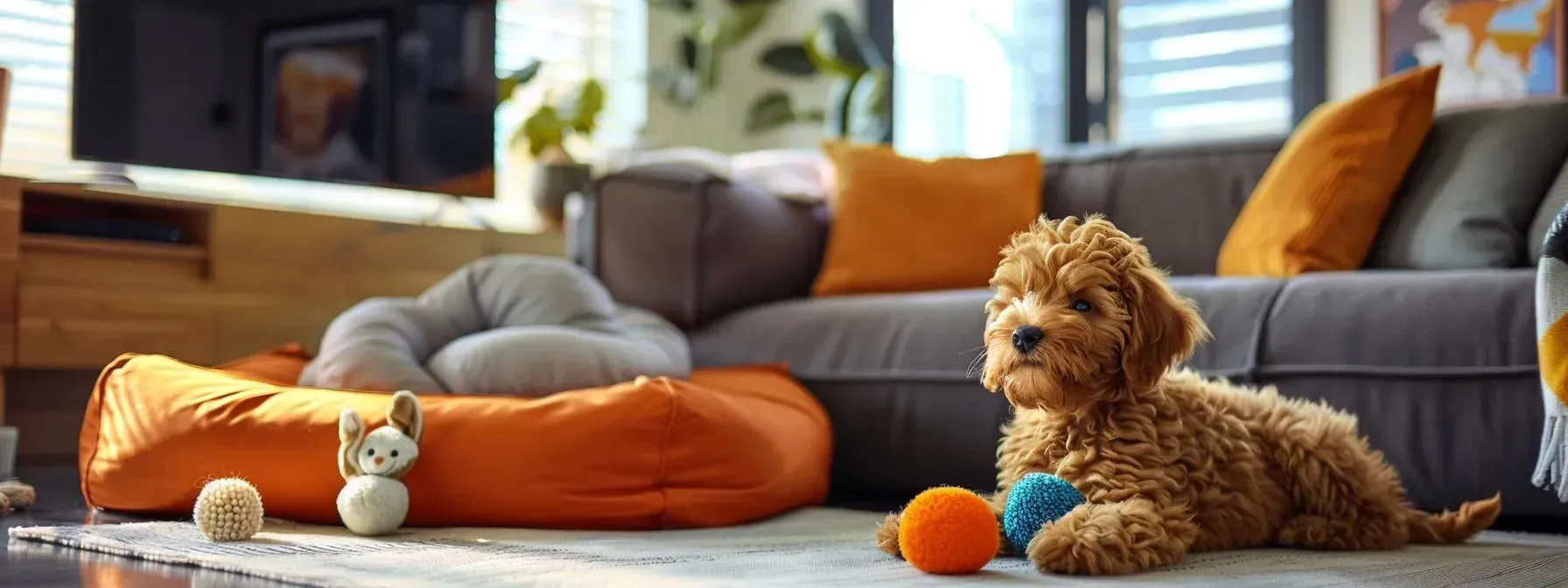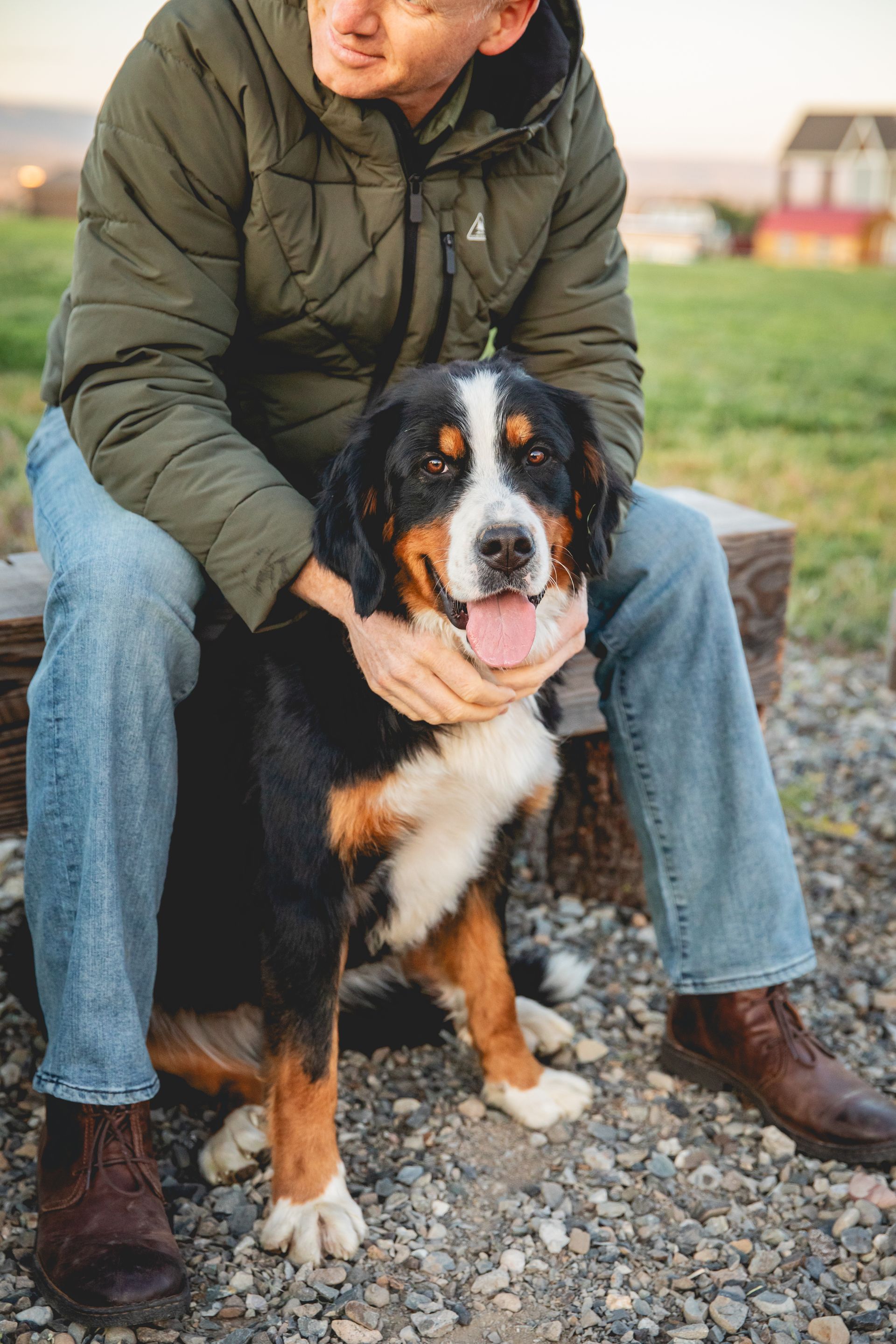By jennjohnson06
•
June 7, 2025
Starting the journey with your Bernedoodle puppy can feel overwhelming—but it doesn’t have to be. With the right foundation, your puppy can grow into a calm, confident, and obedient companion. This guide walks you through everything you need to know to train your Bernedoodle effectively—from building trust to teaching commands—so your puppy thrives in your family environment. You’ll discover how to: Build a strong emotional bond using play, praise, and positive reinforcement. Set up a distraction-free training space that encourages learning. Implement daily routines that create clarity, consistency, and results. Socialize your puppy to reduce future behavioral issues. Track progress and adjust as your Bernedoodle grows. Establish a Strong Bond With Your Bernedoodle Puppy A strong bond is the foundation of all effective training. Before you teach commands, your puppy must see you as a source of safety, love, and leadership. Use Positive Reinforcement for Fast Learning Reward good behavior immediately. When your puppy sits, comes, or stays on command, follow with a treat, enthusiastic praise, or a belly rub. This links the action to a positive result. Example: Your Bernedoodle sits when you say “sit.” Instantly give a small treat and say, “Good boy!” in a happy tone. That’s how habits form. Build Trust Through Daily Quality Time Training doesn’t only happen during drills. It happens during walks, cuddle time, and even grooming. These bonding moments help your puppy feel secure and reinforce your role as a leader. Make Playtime Part of the Training Process Games like fetch, tug-of-war, and hide-and-seek build rapport and can sneak in training. Use them to practice commands like “drop it,” “stay,” and “come” in a fun, low-pressure way. Implement Consistent Training Techniques for Results Consistency is king. If your commands and schedule vary, your puppy will feel confused and anxious. Keep things simple and repeatable. Stick to a Daily Training Routine Aim for 2–3 short sessions (10–15 minutes each) per day. Morning, mid-day, and evening sessions keep your puppy engaged without overwhelming them. Use Clear, Simple Commands Choose one word per command: “Sit,” “Stay,” “Come.” Say it the same way every time. Don’t say, “Come on, let’s go!” one day and “Come here, puppy!” the next. Consistency leads to clarity. Reward Instantly for Maximum Impact The reward must come within 2–3 seconds of the behavior. That’s how dogs connect the dots. A delay confuses the message. Create a Safe, Distraction-Free Learning Environment Puppies are easily distracted. You need a training space that sets your Bernedoodle up for success. Designate a Quiet Training Zone Pick a calm area with minimal noise and foot traffic. Carpet or yoga mats help avoid slipping. This space becomes the “classroom” where your puppy knows it’s time to focus. Eliminate Noise and Movement Turn off TVs, silence phones, and keep other pets out. Distractions reduce your puppy’s ability to process and retain new commands. Add Familiar Comfort Items Blankets, soft toys, or even a T-shirt with your scent can lower anxiety. These familiar items create a calm learning atmosphere, especially in the early weeks. Socialize Your Bernedoodle for Balanced Behavior Socialization is non-negotiable. Early exposure to people, animals, and places reduces future fear-based behaviors. Introduce New People and Environments Gradually Walk your puppy around the neighborhood, visit friends’ homes, or stroll through pet-friendly stores. Let your puppy take in the world at a comfortable pace. Schedule Controlled Dog Interactions Enroll in puppy playgroups or classes. These interactions help your Bernedoodle learn bite inhibition, respect boundaries, and develop healthy play habits. Desensitize to Common Sounds and Sights Vacuum cleaners, doorbells, traffic—these should all be introduced gently and progressively. Normalize them now to avoid anxiety later. Teach Basic Commands to Build Manners and Safety Commands like “Sit,” “Stay,” and “Come” aren’t just cute—they’re essential for safety and harmony. Begin With Sit, Stay, and Come Teach these in a quiet space using food rewards. “Sit” builds calm. “Stay” builds impulse control. “Come” prevents danger if your dog bolts or wanders. Leash Train Early for Walk Control Practice short indoor walks with rewards for staying at your side. Gradually introduce outdoor walks. Bernedoodles love to explore, but leash manners protect them (and your shoulder!). Use Games to Reinforce Training Naturally Make learning a game. Use hide-and-seek for recall training. Tug-of-war with a “drop it” command builds impulse control. Fun increases engagement and retention. Track Progress and Adjust as Needed No two Bernedoodles are exactly alike. Some will catch on in days; others need weeks. Stay flexible. Keep a Simple Training Log Track which commands you’re working on, what’s going well, and where your puppy struggles. Snap photos or take short videos—progress is easier to spot when documented. Adjust Based on Results Is your puppy ignoring “stay”? Try shorter durations or a different reward. Don’t force what isn’t working—adapt. The best trainers are observers first, instructors second. Celebrate Every Win Small wins build momentum. Celebrate a 3-second “stay” with a treat or short play session. Progress happens in inches, not miles. Final Thoughts Training your Bernedoodle puppy doesn’t have to be stressful—it can be one of the most rewarding parts of pet ownership. By building a bond based on trust, staying consistent, and adjusting as you go, you’ll raise a dog who’s not just obedient, but joyful to train. Stick with the plan, trust the process, and enjoy the journey. Your puppy is learning how to thrive—and you’re learning how to lead. Frequently Asked Questions Q: How does positive reinforcement help in training my Bernedoodle? A: It links behavior to reward, helping your puppy repeat good actions with confidence and excitement. Q: What should be included in a daily training schedule? A: Two to three short training sessions, regular walks, downtime, and one-on-one bonding moments. Q: How do I create a distraction-free training area at home? A: Choose a quiet, low-traffic spot with soft flooring. Remove electronics, noise, and other pets. Q: Why is socialization important for a Bernedoodle puppy? A: It helps your puppy feel confident in new environments, reduces reactivity, and fosters polite behavior. Q: When should I start leash training my Bernedoodle? A: As early as 8–10 weeks using a gentle, reward-based approach. The earlier you start, the better the results.




